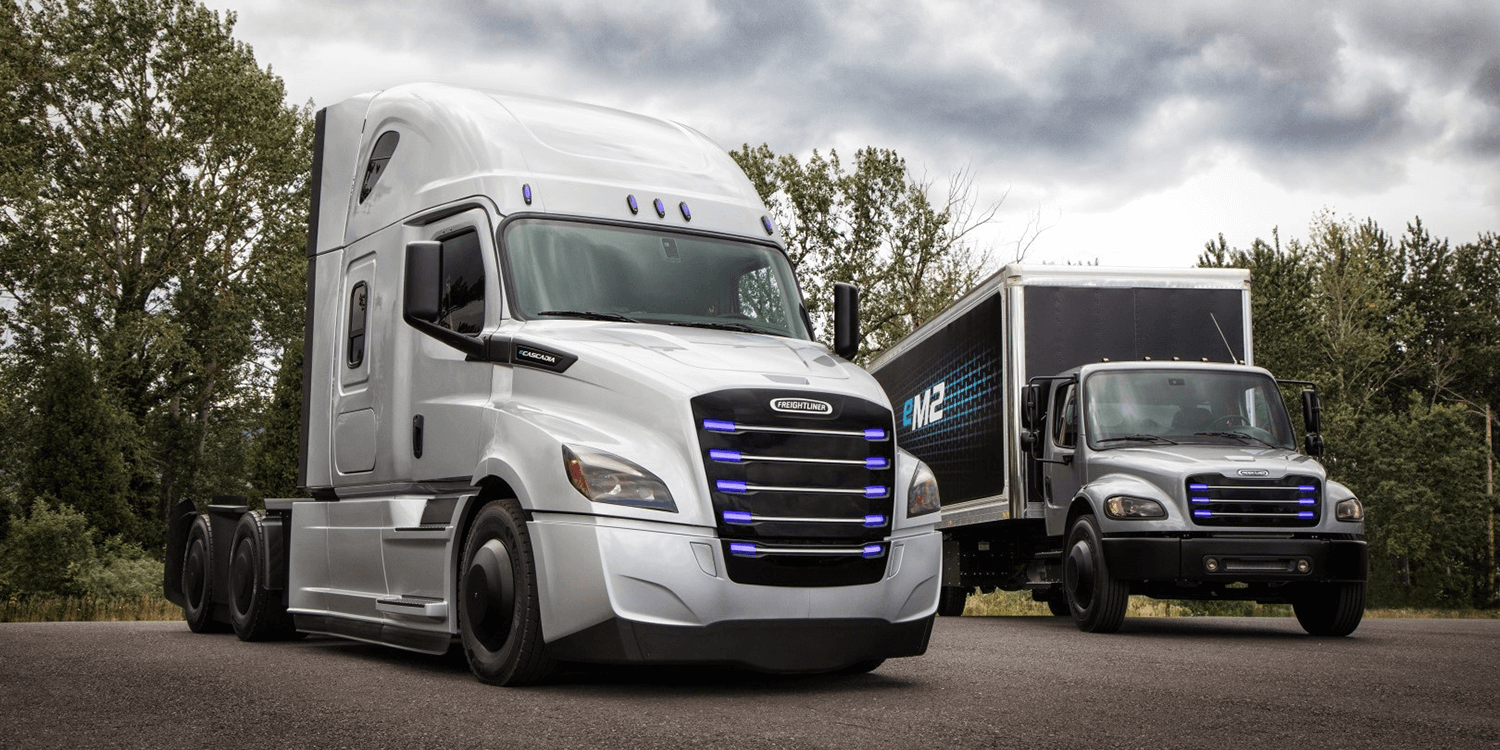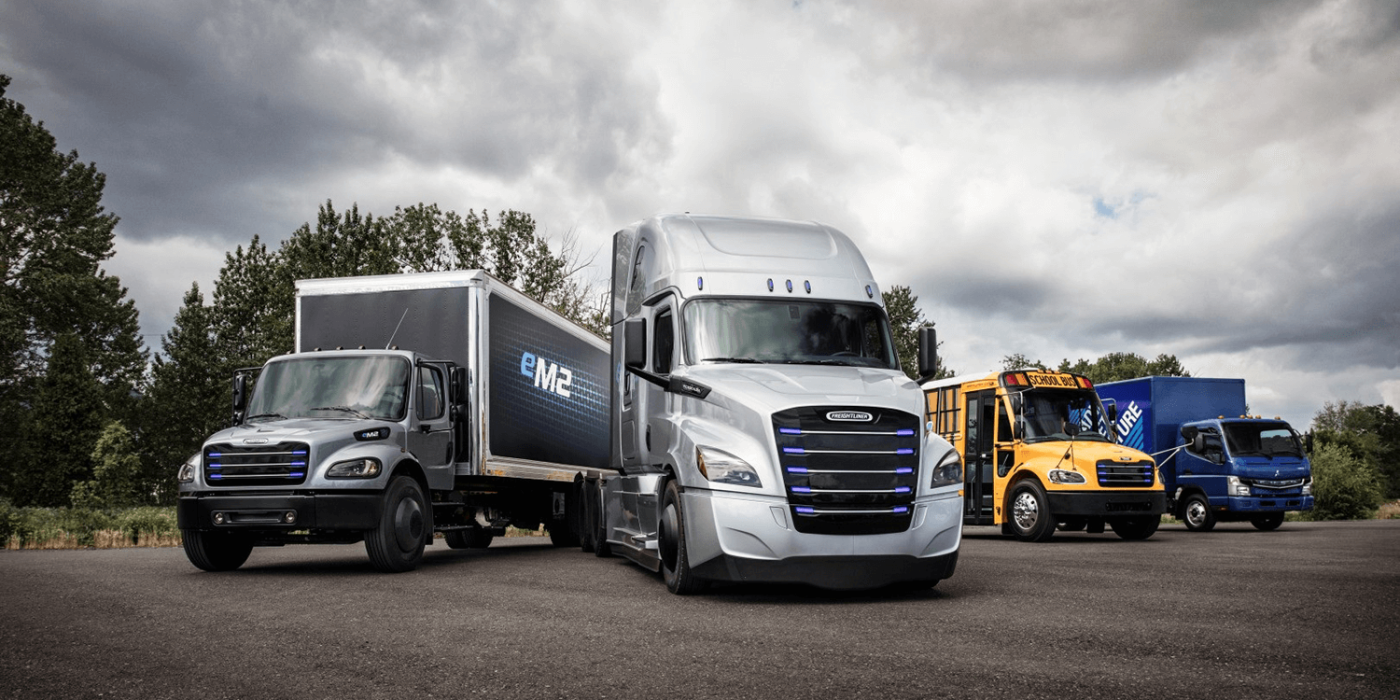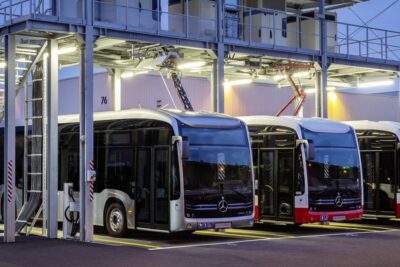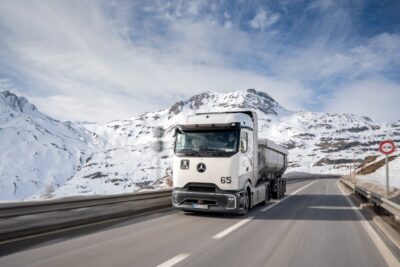Daimler Trucks founds e-mobility unit & announces new trucks
Daimler Trucks & Buses is bundling their know-how for electric propulsion systems in utility vehicles in a new, global-acting organization named the E-Mobility Group (EMG). They also introduced two new trucks, which were especially developed for the US market.
The e-mobility unit will take over the job to manage the EV vehicle and component strategy across segments, markets and brands, with the goal of developing a globally unified architecture. Gesa Reimelt, the current head of product development for Powertrains and the eDrive system at Mercedes, will be taking over leadership of the unit starting on the first of July, with employees located in Stuttgart, Germany, Portland, USA and Kawasaki in Japan.
The overhead goal for Daimler Trucks & Buses is to take a leading role in the global electric utility vehicle market. In a press statement, Daimler asserted that “electric mobility as an innovation driver in the commercial vehicle industry and as a decisive factor for leading the transport sector into an emission-free future.” A further focus for the company is the affordability of the vehicles, adding: “e-mobility must be cost-effective – both for the customer and for the manufacturer.”
“We expect increasing demand for electric trucks and buses, and are also receiving these signals from our customers,” added Frank Reintjes, head of global Powertrain and Manufacturing Engineering at Daimler. He believes that only manufacturers with competencies in both more traditional as well as electric propulsion systems will be able to offer economic and technologically viable solutions. For conventional systems, the company already established a platform strategy some time ago.
In the USA, the company has also gone ahead and presented two new electric trucks specifically designed for the US market. As part of the Capital Market & Technology Days in Portland, the utility vehicle manufacturer presented the heavy duty truck Freightliner eCascadia and the middle-weight freight liner eM2.
Regarding technical details for the trucks, so far this much has been announced: The eCascadia is a derivative of the Cascadia trucks, and will feature a range of 400 km and 537 kW performance. The batteries designated for the truck are 550 kWh and can charge to 80% capacity within 1.5 hrs. The vehicles has a load-bearing capability of more than 15 tonnes.

The Freightliner em2 is driving in the middle-weight range, with an allowed total load of nine to twelve tonnes. It is designed mainly for local distribution traffic and last-mile deliveries. The eM2 has a battery capacity of 325 kWh and range up to 370 km, using a 353 kW motor. The charging duration up to 80% capacity takes less than an hour.
According to Reintjes, both vehicles were specifically designed for the US market. A test fleet of 30 vehicles will be handed over to the first US customers over the course of this year. As is the case with the Fuso eCanter light truck and the medium-weight Mercedes eActros, Daimler is planning to adjust production details according to customer feedback. The trucks will enter serial production in 2021.
Both electric trucks by Freightliner are joining a steadily growing lineup of electrified utility vehicles under the Daimler Trucks & Buses banner. Currently the vehicles on offer are the Mercedes-Benz eActros, the Fuso eCanter and the electric city bus Citaro, as well as the school bus Saf-T Liner C2 Jouley.
greencarcongress.com, media.daimler.com, greencarcongress.com, bloomberg.com





0 Comments